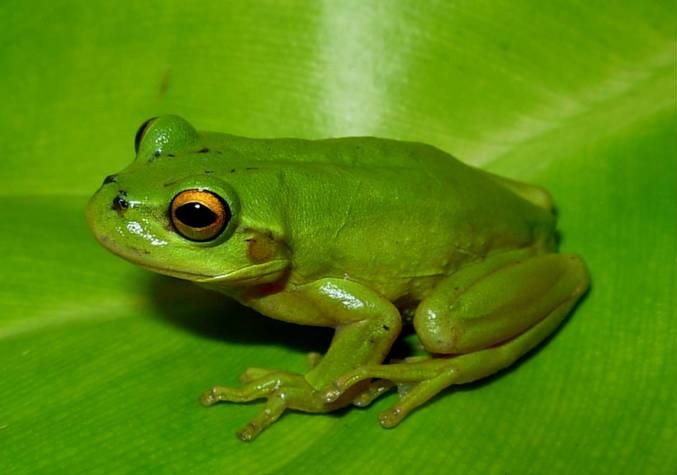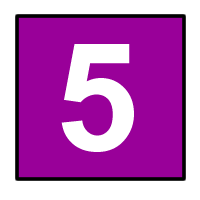|
Suba, Bogotá
Suba is the 11th locality of Bogotá, capital of Colombia. It is located in the northwest of the city, bordering to the north the municipality of Chía in Cundinamarca, to the west the municipality of Cota, to the east the locality Usaquén and to the south the localities Engativá and Barrios Unidos. This district is inhabited by residents of all social classes. Etymology Suba is either derived from the Muysccubun contraction ''Suba'', meaning " Flower of the Sun" (uba = "fruit" or "flower", sua = "Sun", minus its last vowel, making it a possessive) or from the words ''sua'' (Sun) and ''sie'' (water). Geography Suba has certain green areas, mostly concentrated in the west of the locality, on the Suba and the La Conejera Hills, as well as the plains where urbanization has developed. Suba has become a residential area with small industrial and commercial zones located in the south of the locality. The Suba Hills separate the locality into two parts; the eastern side bein ... [...More Info...] [...Related Items...] OR: [Wikipedia] [Google] [Baidu] |
Bogotá
Bogotá (, also , , ), officially Bogotá, Distrito Capital, abbreviated Bogotá, D.C., and formerly known as Santa Fe de Bogotá (; ) during the Spanish period and between 1991 and 2000, is the capital city of Colombia, and one of the largest cities in the world. The city is administered as the Capital districts and territories, Capital District, as well as the capital of, though not part of, the surrounding department of Cundinamarca Department, Cundinamarca. Bogotá is a territorial entity of the first order, with the same administrative status as the Department (Colombia), departments of Colombia. It is the political, economic, administrative, and industrial center of the country. Bogotá was founded as the capital of the New Kingdom of Granada on 6 August 1538 by Spanish conquistador Gonzalo Jiménez de Quesada after a harsh Spanish conquest of the Muisca, expedition into the Andes conquering the Muisca people, Muisca, the indigenous inhabitants of the Altiplano. Santafé ... [...More Info...] [...Related Items...] OR: [Wikipedia] [Google] [Baidu] |
Guaymaral Y Torca
Guaymaral y Torca ( es, Humedal Guaymaral y Torca) is a combined wetland, part of the Wetlands of Bogotá, located in the north of the Colombian capital in the localities Suba and Usaquén, Bogotá, Colombia. The wetlands on the Bogotá savanna cover an area of about . Guaymaral y Torca, the northernmost wetlands of Bogotá at the foot of the Eastern Hills, is composed of three parts, Guaymaral in the west in Suba (), Torca in the east in Usaquén () and a small strip along the dividing Autopista Norte between the two main wetlands. The wetlands are located in the Torca River basin.Moreno et al., s.a., p.21 The Autopista Norte was constructed in 1952, dividing the wetlands. Etymology The word Guaymaral is derived from the Chibcha name for ''Brosimum utile'', ''guaimaro'', cultivated by the indigenous people in the Valle de Upár and the Muzo. [...More Info...] [...Related Items...] OR: [Wikipedia] [Google] [Baidu] |
Prado (TransMilenio)
The simple station Prado is part of the TransMilenio mass-transit system of Bogotá, Colombia, which opened in the year 2000. Location The station is located in northern Bogotá, specifically on Autopista Norte with Calle 128 B. It serves the Prado Varaniego, La Calleja and Canódromo neighborhoods. History After the opening of the Portal de Usme in early 2001, the Autopista Norte line was opened. This station was added as a northerly expansion of that line, which was completed with the opening of the Portal del Norte later that year. The station is named Prado due to its proximity to the Prado Veraniego neighborhood of Suba. At the west side of the station there is a Home Sentry supercenter. Station services Old trunk services Main line service Feeder routes This station does not have connections to feeder routes. Inter-city service This station does not have inter-city service. External linksTransMilenio See also *Bogotá *TransMilenio TransMilenio is a bus ... [...More Info...] [...Related Items...] OR: [Wikipedia] [Google] [Baidu] |
Alcalá (TransMilenio)
Alcalá is a simple station that is part of the TransMilenio mass-transit system of Bogotá, Colombia. Location The station is located in northern Bogotá, specifically on Autopista Norte Autopista Norte, also called Autopista paseo de los libertadores (Way of the Liberators Highway), is a major road in Bogotá, Colombia, running through the northern part of the city to its southern end at Avenida Caracas. Names The road was o ... with Calle 136. It serves the Los Cedros and San José del Prado neighborhoods. History After the opening of the Portal de Usme in early 2001, the Autopista Norte line was opened. This station was added as a northerly expansion of that line, which was completed with the opening of the Portal del Norte later that year. The station is named Alcalá due to its proximity to the neighborhood of the same name. This station has a "Punto de Encuentro" or point of gathering, which has bathrooms, coffeeshop, parking for bicycles and a tourist attenti ... [...More Info...] [...Related Items...] OR: [Wikipedia] [Google] [Baidu] |
Calle 142 (TransMilenio)
The simple station Calle 142 is part of the TransMilenio mass-transit system of Bogotá, Colombia, which opened in 2000. Location The station is located in northern Bogotá, specifically on Autopista Norte with Calle 144. It serves the Los Cedros and Prado Pinzón neighborhoods. History After the opening of the Portal de Usme in early 2001, the Autopista Norte line was opened. This station was added as a northerly expansion of that line, which was completed with the opening of the Portal del Norte later that year. The station is named Calle 142 due to its location near that road, though it serves the Cedritos area. On March 7, 2011, an articulated bus crashed into one of their wagons. Ten people were injured and the station suffered damage. Station services Old trunk services Main line service Feeder routes This station does not have connections to feeder routes. Inter-city service This station does not have inter-city service. External linksTransMilenio See ... [...More Info...] [...Related Items...] OR: [Wikipedia] [Google] [Baidu] |
Calle 146 (TransMilenio)
The simple station Calle 146 is part of the TransMilenio mass-transit system of Bogotá, Colombia, which opened in the year 2000. Location The station is located in northern Bogotá, specifically on Autopista Norte with Calle 150. It serves the Margaritas and Victoria Norte neighborhoods. History After the opening of the Portal de Usme in early 2001, the Autopista Norte line was opened. This station was added as a northerly expansion of that line, which was completed with the opening of the Portal del Norte later that year. The station is named Calle 146 due to its proximity to that major road, though it serves the Cedritos residential area. Station Services Old trunk services Main line service Feeder routes This station does not have connections to feeder routes. Inter-city service This station does not have inter-city service. External linksTransMilenio See also *Bogotá Bogotá (, also , , ), officially Bogotá, Distrito Capital, abbreviated Bogotá, D ... [...More Info...] [...Related Items...] OR: [Wikipedia] [Google] [Baidu] |
Mazurén (TransMilenio)
Mazurén is a simple station, part of the TransMilenio mass transit system of Bogotá, Colombia. Location The station is located in northern Bogotá, specifically on Autopista Norte Autopista Norte, also called Autopista paseo de los libertadores (Way of the Liberators Highway), is a major road in Bogotá, Colombia, running through the northern part of the city to its southern end at Avenida Caracas. Names The road was o ... with Calle 152. It serves the Las Margaritas and Mazurén neighborhoods. History After the opening of the Portal de Usme in early 2001, the Autopista Norte line was opened. This station was added as a northerly expansion of that line, which was completed with the opening of the Portal del Norte later that year. The station is named Mazurén due to its proximity to the Centro Comercial Mazurén and the Mazurén residential area. Also near the station are the Liceo de Cervantes and Calle 153. Station Services Old trunk services Main Line Service ... [...More Info...] [...Related Items...] OR: [Wikipedia] [Google] [Baidu] |
Calle 161 (TransMilenio)
Calle 161 is a simple station that is part of the TransMilenio mass-transit system of Bogotá, Colombia. Location The station is located in northern Bogotá, specifically on Autopista Norte Autopista Norte, also called Autopista paseo de los libertadores (Way of the Liberators Highway), is a major road in Bogotá, Colombia, running through the northern part of the city to its southern end at Avenida Caracas. Names The road was o ... with Calle 161. It serves the Cantagallo, Las Orquideas and Estrella del Norte neighborhoods. History After the opening of the Portal de Usme in early 2001, the Autopista Norte line was opened. This station was added as a northerly expansion of that line, which was completed with the opening of the Portal del Norte later that year. The station receives from the street that is on the north side of it. As of March 2019 changed the name of Cardio Infantil to the current name. Station Services Old trunk services Main line service Feeder ... [...More Info...] [...Related Items...] OR: [Wikipedia] [Google] [Baidu] |
Toberín (TransMilenio)
Toberín is a simple station, part of the TransMilenio mass-transit system of Bogotá, Colombia. Location The station is located in northern Bogotá, specifically on Autopista Norte with calle 165. It serves the Toberín, Britalia and Granada Norte neighborhoods. History After the opening of the Portal de Usme in early 2001, the Autopista Norte line was opened. This station was added as a northerly expansion of that line, which was completed with the opening of the Portal del Norte later that year. The station is named Toberín due to its proximity to the neighborhood of the same name, located in the locality of Usaquén. Station services Old trunk services Main line service Feeder routes This station does not have connections to feeder routes. Inter-city service This station does not have inter-city service. See also * Bogotá * TransMilenio TransMilenio is a bus rapid transit (BRT) system that serves Bogotá, the capital of Colombia, and Soacha. The system open ... [...More Info...] [...Related Items...] OR: [Wikipedia] [Google] [Baidu] |
Portal Del Norte (TransMilenio)
Portal del Norte is one of the terminus stations of the TransMilenio mass-transit system of Bogotá, Colombia, which opened in the year 2000. Location Portal del Norte is located in northern Bogotá, specifically on Autopista Norte with Calle 175. It serves the La Uribe, Villa del Prado, Nueva Zelandia, and Northwest San Antonio neighborhoods. History In late 2001, after the opening of the Portal de Usme, the Portal del Norte was opened as the third terminus in the system. Nearby there are Éxito and Home Center superstores, as well as a Colsubsidio and a small shopping center called Panama. In mid-2005, its entire fleet of feeder buses made by Mercedes Benz and operated by ''Alnorte'' were renovated to be put into non-TransMilenio service. A new operator, ''Alnorte Fase 2'' began service with new Volkswagen buses that bore the branding of Brazil's Busscar. Station services Old trunk services Main line service Feeding services The following feeder routes also wo ... [...More Info...] [...Related Items...] OR: [Wikipedia] [Google] [Baidu] |
TransMilenio
TransMilenio is a bus rapid transit (BRT) system that serves Bogotá, the capital of Colombia, and Soacha. The system opened to the public in December 2000, covering Caracas Avenue and 80 street. Other lines were added gradually over the next several years, and as of 2022, 12 lines totalling run throughout the city. It is part of the city's Integrated Public Transport System (''Sistema Integrado de Transporte Público'' ITPin Spanish), along with the urban, complementary and special bus services operating on neighbourhoods and main streets. It was inspired by Curitiba's '' Rede Integrada de Transporte'' (Integrated Transportation Network). TransMilenio consists of several interconnected BRT lines, with raised floor stations in the center of a main avenue, or "''troncal''". Passengers typically reach the stations via a bridge over the street. Usually four lanes down the center of the street are dedicated to bus traffic. The outer lanes allow express buses to bypass buses ... [...More Info...] [...Related Items...] OR: [Wikipedia] [Google] [Baidu] |
Avenida Suba
Avenida Suba is a major road in northern Bogotá, Colombia, connecting the locality of Suba with the rest of the capital. Etymology Avenida Suba is named after the locality Suba. Suba is either derived from the Chibcha contraction ''Suba'', meaning " Flower of the Sun" (uba = "fruit" or "flower", sua = "Sun", minus its last vowel, making it a possessive) or from the words ''sua'' (Sun) and ''sie'' (water). It is also known as ''Troncal Suba'' due to being one of the main lines in the TransMilenio system. Route Its southern end begins at the intersection of Avenida NQS with Calle 80 in the locality of Barrios Unidos. It runs north entering Suba at Calle 100. At the shopping center Centro Suba it splits into two, turning into ''Avenida Transversal de Suba'' (Calle 145) and ''Antigua Avenida de Suba'' (Calle 139). Points of interest along the route * The Portal de Suba of the TransMilenio system * Iserra 100 shopping center * Bulevar Niza shopping center * Centro Suba shopp ... [...More Info...] [...Related Items...] OR: [Wikipedia] [Google] [Baidu] |








